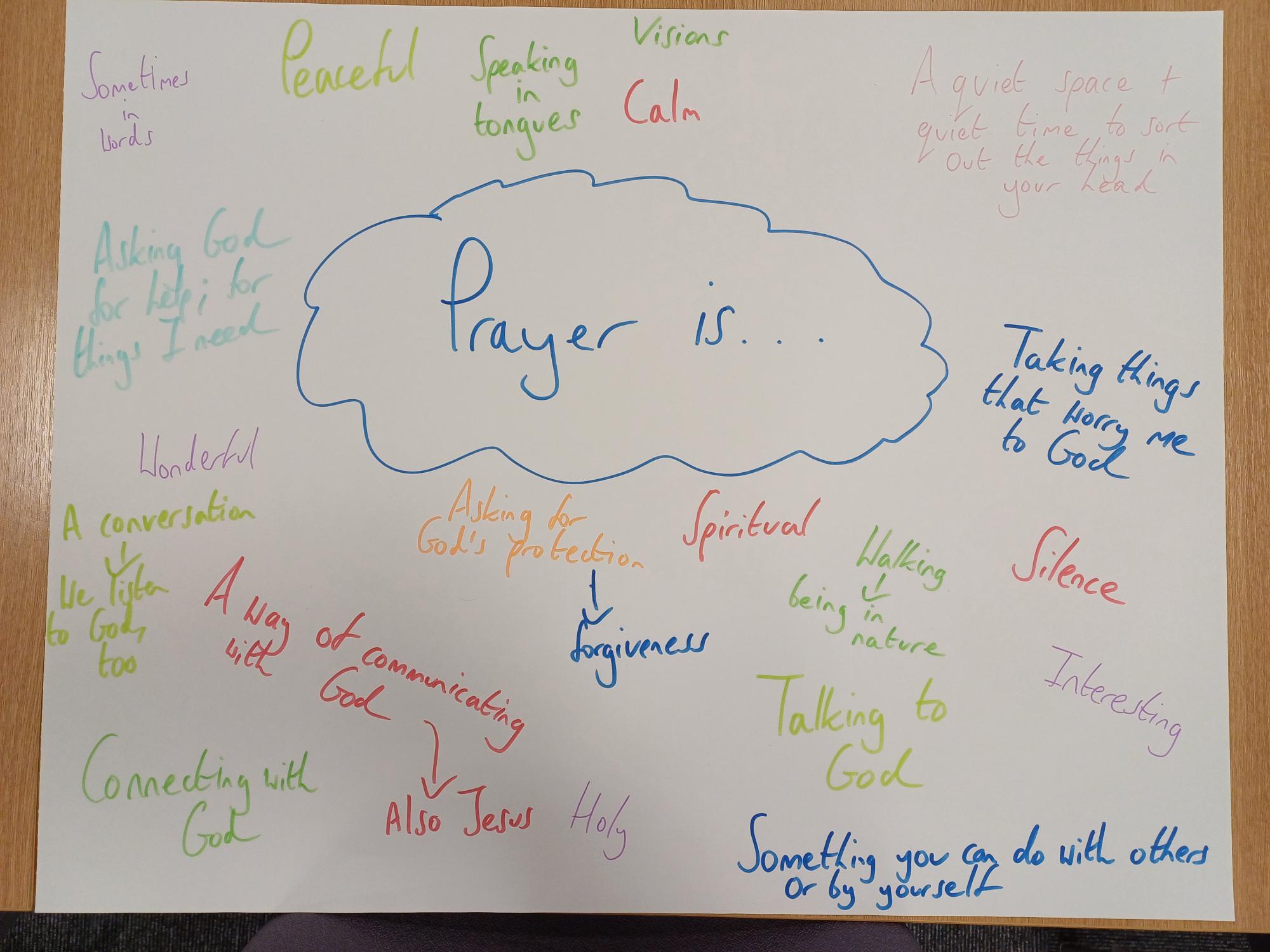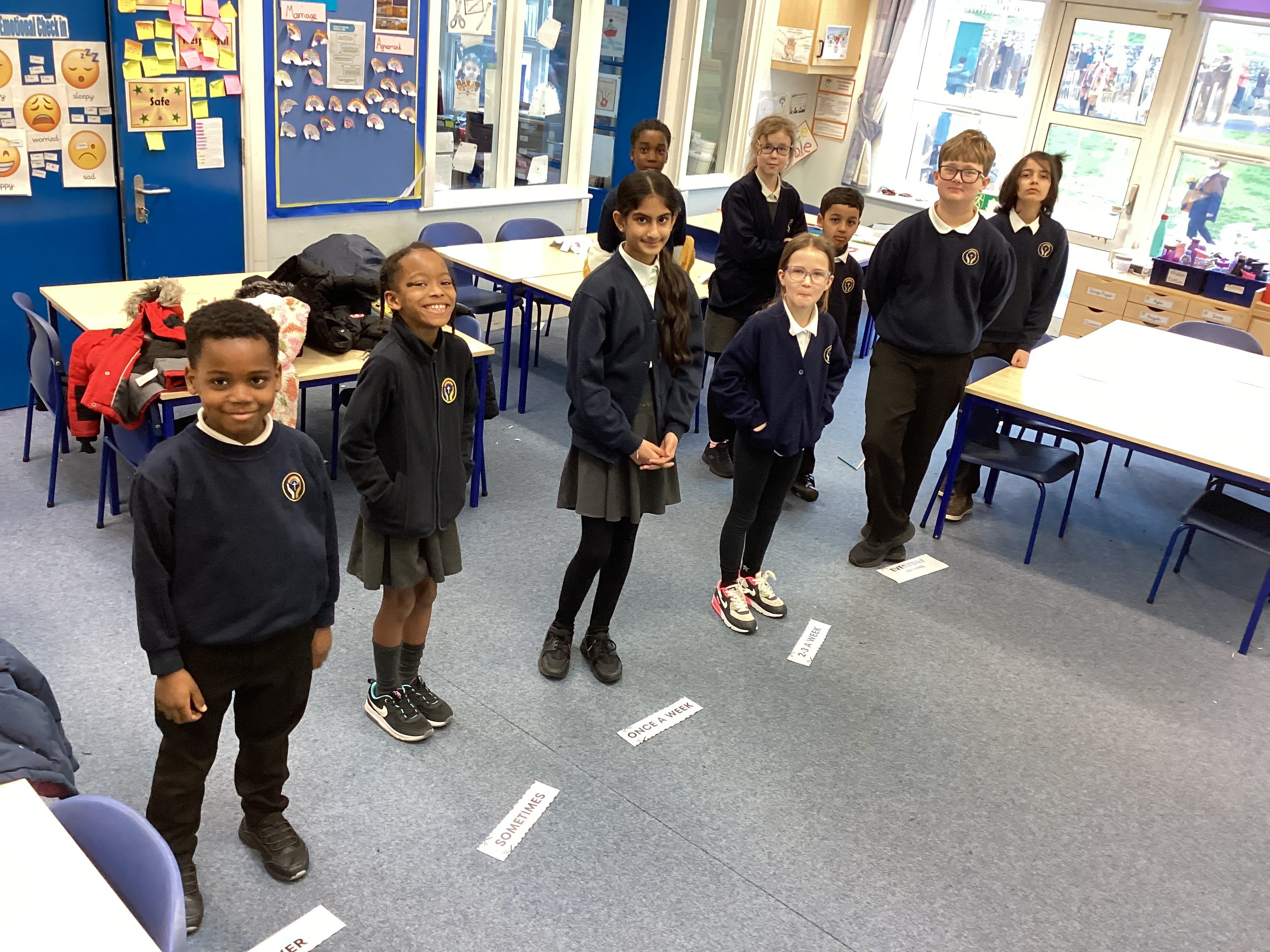 Seeing prayer as a conversation with God and preferring silent prayer in a calm environment to praying out loud or using apps were among the key findings of this term’s listening exercise on the theme of prayer.
Seeing prayer as a conversation with God and preferring silent prayer in a calm environment to praying out loud or using apps were among the key findings of this term’s listening exercise on the theme of prayer.
Nearly 150 children and young people, aged six to 17, from eight primary schools, three secondary schools and five church groups, participated in listening groups which were asked to reflect on what they thought prayer was; what helps them pray (and what doesn’t help); and to describe when, where and with whom they most often pray. Members of the Bishops’ Children’s and Youth Council then led the ‘sense-making’ process of the responses from the listening groups.
The most common response to the question ‘What is prayer?’ was conversation – talking with, and listening to God – followed by an opportunity to ask God for help.  When asked what helps, or doesn’t help, them to pray, the top responses from the children and young people involved were: praying in their head (rather than out loud); being in a quiet space; closing their eyes; listening to God; praying in their own language; using the Lord’s Prayer; and reading the Bible.
When asked what helps, or doesn’t help, them to pray, the top responses from the children and young people involved were: praying in their head (rather than out loud); being in a quiet space; closing their eyes; listening to God; praying in their own language; using the Lord’s Prayer; and reading the Bible.
Phone apps were the least likely to be chosen as a helpful way to pray. As one young person put it: “‘I want to disconnect to pray. I turn off my phone and get rid of distractions”.
The place where children most regularly prayed was at school: 54% said they prayed at school every day, whereas just 21% of young people said the same. It was also more common for children and young people to pray on their own than with their parents, and to pray at bedtime rather than in the morning or before meals. “‘I pray at bedtime - looking back at my day to say thanks and looking to tomorrow, asking for God’s help”, said one young person. 
In response to these findings, Matt Young, Youth Engagement & Intergenerational Communities Enabler, said: “Our findings suggest prayer in the home - before meals and with parents - rarely happens. However, 40% of children and young people said they pray at special occasions. I wonder if there is something we can learn about gathering more often around ritual, festival, or celebration, as this may encourage more prayer in the home.”
Reflecting on the responses from listening groups, the Bishops’ Children & Youth Council set three questions for Bishop Martyn to respond to by video:
- Contemplative prayer practices, such as calm, quiet, listening and peaceful ranked highly with children and young people. What are your reflections on this?
- What do you find most helps you pray?
- How can the church support children, young people and families develop an everyday habit of prayer?
You can watch Bishop Martyn’s responses in the videos below.
The listening exercise on prayer follows three youth-led listening exercises held in 2023, which you can read more about here.
The theme for next term’s listening exercise, chosen by children and young people, is Climate Change. This is being run in partnership with the OWL (Outdoor Worship Leicestershire) Network, and the findings will be presented by young people at the Leicestershire Eco Church Conversations event on 14 September.
Could you facilitate a listening group with children and/or young people in your context?
Simply download the facilitators guidebook here and facilitate a 20-30 min session with children or young people, feeding back their responses by the end of the school term in July. If you have any questions or would like to know more, please contact Matt Long on Matt.Long@leicestercofe.org